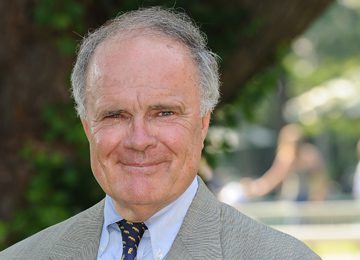By Hal Handel
by Hal Handel
Over the course of the past 40 years, I have seen the sport of Thoroughbred racing encounter significant challenges and I've witnessed them from a couple of different perspectives.
As a deputy attorney general in New Jersey in 1975-77, I supervised the Tony Ciulla race-fixing case. (For those of you too young to remember, Ciulla admitted to fixing races at a host of tracks, primarily in New England, New York and the Mid-Atlantic region, between 1972 and 1975. Ciulla became a state's witness and eventually was resettled in the federal witness relocation program.)
Later, I served as counsel and executive director for the New Jersey Racing Commission, followed by 20 years as a racetrack executive at Monmouth Park, The Meadowlands, Philadelphia Park, Aqueduct, Belmont Park, and Saratoga, with stints as president of the Thoroughbred Racing Association and chairman of the Thoroughbred Racing Protective Bureau along the way.
Today, as a racing industry consultant, I maintain an ongoing professional interest and a deep, abiding passion for the sport.
I was struck last week by the sincerity and conviction expressed in Bill Casner's Op/Ed essay appearing in the Thoroughbred Daily News, particularly his closing assertion that “federal intervention is probably the only way we have a chance at survival.”
Of course, he was talking about drugs in our sport, not fixed races.
But he made a good point and I share his view.
We, as an industry, are indeed at a crossroads and need to follow a new path on matters relating to equine medication.
We all want uniformity, but we disagree on the best route.
This industry faced a similar dilemma in the 1970s.
When the Interstate Horseracing Act (IHA) was first proposed, passionate and heated debate ensued.
Detractors saw it as a very risky and controversial legislative initiative and argued that the IHA would destroy the industry.
At the same time, proponents extolled its virtues and predicted it would not only save the industry, but ensure a healthy future for the sport. Undeniably, this was a watershed moment and it represented a risky paradigm shift. At the end of the day, the legislation passed. The initiative created the distribution model for racing content and forced the industry to create a still-evolving pricing model (simulcast pricing) that led to an unprecedented period of pari-mutuel growth.
Our present situation with rules, testing and penalties is no less meaningful–and no less hotly debated–and I would suggest another paradigm shift is necessary.
Despite the best efforts of state regulators, the goal of true national uniformity regarding medication remains illusory with only a smattering of states having fully embraced plenary uniform standards. Perhaps most tellingly, even major racing states such as California, Florida, Kentucky and New York have not yet implemented all phases of the National Uniform Medication Program.
State-by-state regulation, absent robust uniformity, simply can't work, and indeed, the frequently fine work done by the individual commissions in all other spheres of regulation is undermined by the broken mosaic of inconsistent testing and often inexplicable medication sanctions imposed.
Research and analysis in the past few years of various aspects of Thoroughbred racing, commissioned by The Jockey Club and conducted by McKinsey & Company and others, have repeatedly proved that we are facing daunting public perception problems. Even our best and most robust consumers–in other words, our biggest bettors–express grave concerns over integrity issues and the jumbled puzzle that is our fragmented state-by-state system of rules.
What can we do? What should we do?
I believe the time is ripe to embrace change and to make a paradigm shift in our medication practices. The challenge is no less compelling than the IHA challenge almost 40 years ago. We should support the efforts being made by the newly formed Coalition for Horse Racing Integrity to effect change through federal legislation by establishing an affiliation with widely respected, non-governmental entity in the field of drug testing and athletics: the U.S. Anti-Doping Agency (USADA).
USADA sets world-class standards for sports medication practices. It is a non-governmental, national, and, perhaps most importantly, independent entity.
It runs the anti-doping program, including education, sample collection, results management, and drug reference resources for athletes in U.S. Olympic, Paralympic, Pan American, and Parapan American Sport, including all Olympic sport national governing bodies, their athletes, and events throughout the year.
USADA is well equipped to fix our patchwork system. An affiliation with USADA will help us restore, in immeasurable ways, public confidence in our sport.
Bill Casner had it right when he spoke, pure, simple, and without ulterior motive. A Congressional designation of USADA to effectuate needed change may represent our last and best chance to revive this magnificent sport.
I would urge all industry stakeholders to support this game-changing initiative.
The time to act is now.
If not now, then when?
Hal Handel is a former state prosecutor and longtime Thoroughbred racing executive. He currently provides consultancy services to a variety of gaming and equine service companies, including The Jockey Club.
Not a subscriber? Click here to sign up for the daily PDF or alerts.





